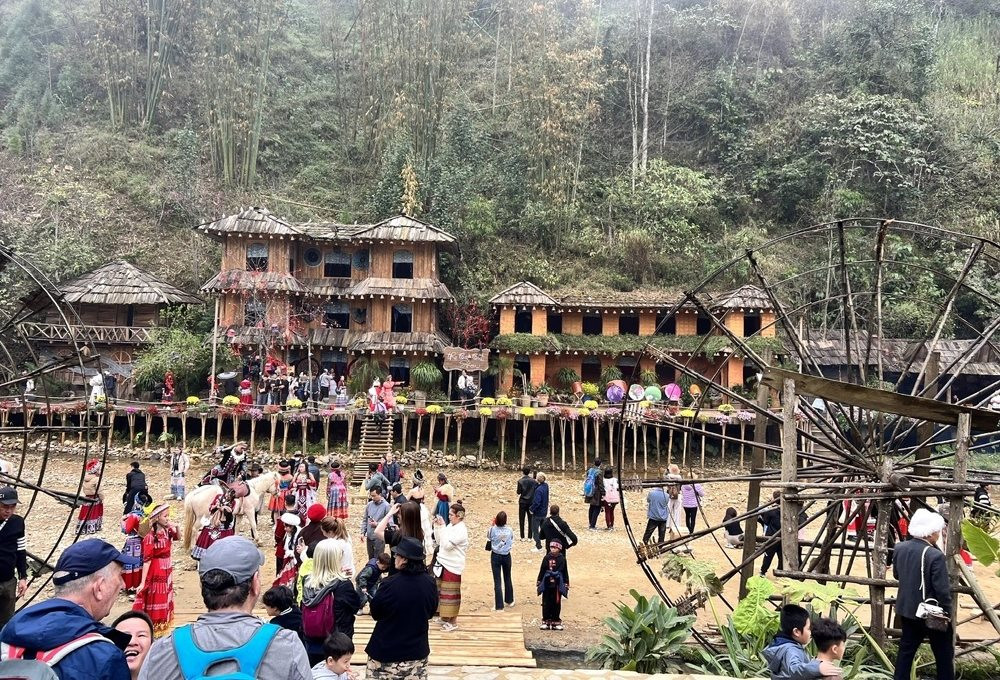
Try homestay
Every time I come to Sa Pa, I feel fresh emotions when I immerse myself in the scenery of the villages. I often wander to Ta Van and Lao Chai communes in the early morning, when the mountains and hills are still covered in mist, the scenery appears magical like a watercolor painting.
Ta Van and Lao Chai are two communes located in the valley, between Ham Rong mountain in Hoang Lien Son range. This is the living area of ethnic minorities such as Giay, Tay, Mong, Dao...
Mr. Hoang Van Muc (Giay ethnic group) was the first person to build a type of community tourism - service (homestay) in Ta Van in 1997. The idea came from reality, when he saw that many people coming to the villages were interested in the culture and lifestyle of the indigenous people. Mr. Muc mobilized his wife, children, neighbors as well as other people to implement the service of eating, staying, and working together for tourists.
Since 2008, with the help of the World Conservation Organization and the Netherlands Development Organization, Sa Pa has built a pilot project to support sustainable tourism. With the goal of training and raising awareness for people, especially ethnic minorities in Sa Pa in tourism business, preserving the cultural identity of ethnic groups...
To date, Ta Van has 50 households registered to do community tourism. Mr. San Van Mun, a household doing tourism, shared that each household can usually register to stay for 20 guests. Guests will learn directly about the customs and practices of the locals during their stay. The price for a night in Ta Van is quite cheap, ranging from only 100,000 VND/room. However, there are also high-end accommodations invested in and built by businesses.
In Ta Van, there are traditional dishes such as grilled hill chicken, local pork, various types of leaf cakes, sticky rice and the rich flavor of corn wine, five-color sticky rice, apple wine and especially wine made from red plum. In Ta Van, there is one thing that makes tourists very excited, which is to wear beautiful ethnic costumes to take pictures.
Coming to each different village, visitors will be exposed to and learn about the traditional features that have become the characteristics of each ethnic group. At each time, visitors will experience the traditional festivals of each ethnic group such as: Gau Tao Festival of the Mong people in San Sa Ho, the Going to the Field Festival of the Giay people in Ta Van, the Cap Sac ceremony of the Red Dao people in Thanh Kim, the Xoe festival in Thanh Phu, and experiencing a day as a farmer in Ta Phin...
According to the Sa Pa tourism “map”, tourists can follow the following routes: Sa Pa - Sa Seng - Hang Da - Hau Thao - Su Pan; Sa Pa - Y Linh Ho - Lao Chai - Ta Van - Giang Ta Chai; Sa Pa - Ma Tra - Ta Phin - Mong Sen; Sa Pa - Ban Ho - Thanh Phu - Nam Sai - Nam Cang. Tourists can choose to go on foot, ride a motorbike, car or combine means of transport, enjoying a community tour from 2-4 days.
Need sustainable development
It is easy to see that in the center of Sa Pa town, tourism is developing rapidly. The urbanization process is taking place rapidly, the construction density is high, many beautiful places such as pine rows and ancient villas no longer exist. Many construction works affect the ecological balance, affecting the landscape; the rapid urbanization process reduces the traditional cultural space of ethnic minorities; the risk of environmental pollution is high.
This is what Lao Cai provincial authorities have realized. Developing community tourism, somewhat “stretching” visitors to tourist villages, reducing pressure in the central area is a smart way, demonstrating the creativity of the people as well as local management agencies at all levels.
It can be seen that Ta Phin is one of the communes that does very well in community tourism in Sa Pa. In addition to being blessed by nature, there are also many people who dare to think and dare to do. Giang Thi Xa and her husband, in Giang Tra village, Ta Phin commune, are active in tourism.
Previously, the family lived mainly on income from farming, but when implementing homestay tourism, the family had a stable source of income. Ms. Xa shared: “Since 2014, my family started working. In addition to providing accommodation and food for tourists, we can also perform traditional handicrafts. The accommodation fee is 100,000 VND/person.”
Or like Ms. Thao Thi Sung, in Can Ngai village, Ta Phin commune, who borrowed preferential loans from the bank to provide services, increasing her family's income. It is worth mentioning that they are always proactive in developing plans to promote, buy and sell products, and import raw materials to produce brocade products to suit the tastes of tourists.
Cat Cat village, San Sa Ho commune, has nearly 80 households, mainly Mong ethnic people, most of them located along the stone-paved terraced road in the middle of the village, some are scattered on the mountain slopes.
In the center of Cat Cat, where three streams murmur day and night, namely Vang stream, Bac stream and Tien Sa stream, and Cat Cat waterfall (also known as Tien Sa waterfall) flow all year round. Next to the waterfall, there are two suspension bridges, Si bridge and A Lu bridge, attracting many tourists to sightsee and take souvenir photos. Mr. Giang A Thong, in Cat Cat village, shared that most of the women in the village are involved in tourism, investing in opening homestays, selling brocade and souvenirs.
According to the Lao Cai Provincial Department of Tourism, in the past, the Mong people lived a self-sufficient life, relying on agricultural labor for their livelihood, so all decision-making power in the family was mainly up to men, because they were the main breadwinners. But since the community tourism movement, everything has changed.
Ms. Ly May Pham - President of the Women's Union of Ta Phin commune, said that in the past, people mainly sold goods on the street, but now ethnic women have participated in professional tourism services... Ethnic women have an advantage in that they have access to tourism activities from a young age, many of them have foreign language skills and better access to media information than men.
Every year, Sa Pa welcomes millions of tourists, which is proof that this mountainous town is still attractive to tourists. It is worth mentioning that Sa Pa has so much beauty, cultural sediments, and many check-in places that attract young people and tourists.
Those are initial achievements. However, to achieve the status of an international destination with a professional tourism culture, Sa Pa still has a lot of work to do.
According to Chairman of Sa Pa Town People's Committee To Ngoc Lien, Sa Pa aims at developing a policy of community tourism that is friendly to nature, orienting the development of tourism products towards sustainability, associated with the preservation and promotion of national cultural values; preserving natural landscapes; developing tourism products with high potential and competitive advantages.
In the coming time, the locality will form five community tourism spots according to ASEAN standards associated with the characteristics of five ethnic minorities in the town, including: Ta Van associated with Giay ethnic culture; Muong Hoa associated with Mong ethnic culture; Ban Ho associated with Tay ethnic culture; Ta Phin associated with Dao ethnic culture, Lien Minh associated with Phu La ethnic culture (Xa Pho industry group). Local authorities set a goal that by 2025, community tourism will become an attractive tourism product, Sa Pa will welcome 5.8 million visitors, with revenue reaching 27,900 billion VND.
The goal is that sustainable development is extremely important, accordingly it is necessary to follow the path of responsible tourism development. That is responsibility for the environment, landscape, creating civilization in the tourism community, awareness of tourists towards each destination... To do this, a complete strategy is needed, with the joint efforts of local authorities, tourism businesses and people.
Source: https://daidoanket.vn/tao-ban-sac-du-lich-tu-van-hoa-ban-dia-10282117.html








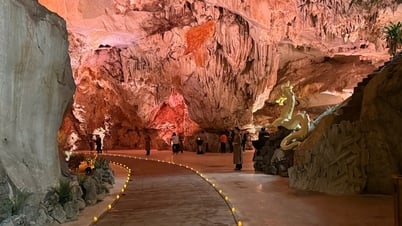






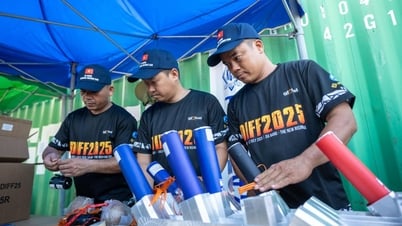










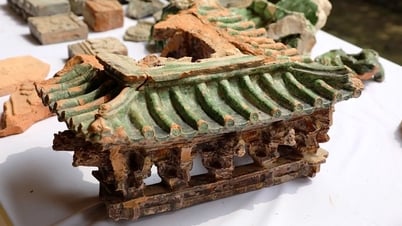

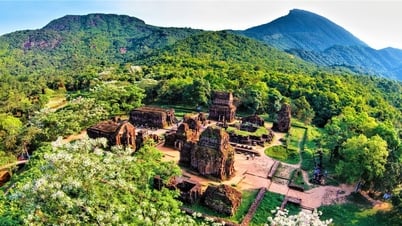




























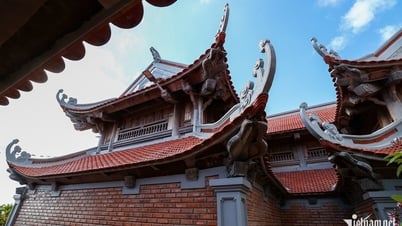












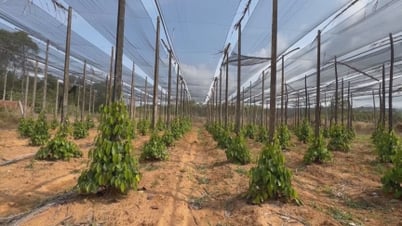





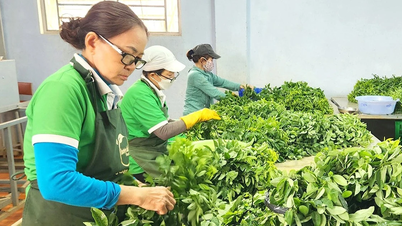

















Comment (0)